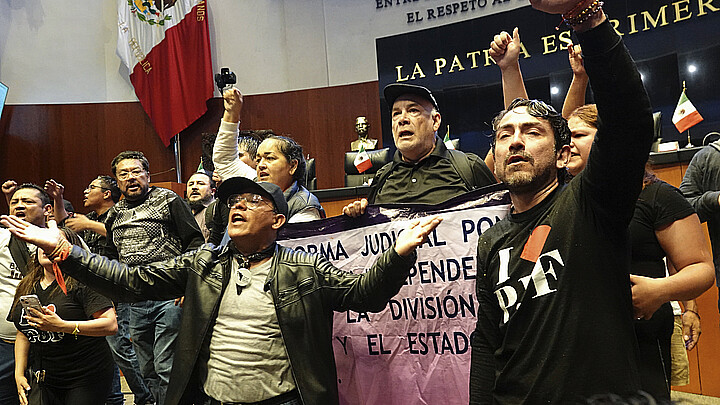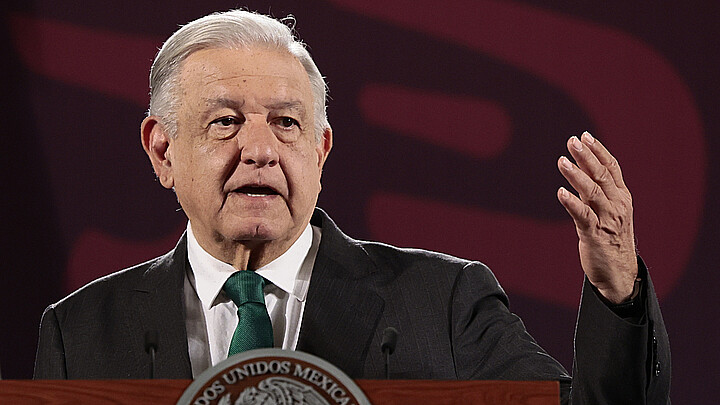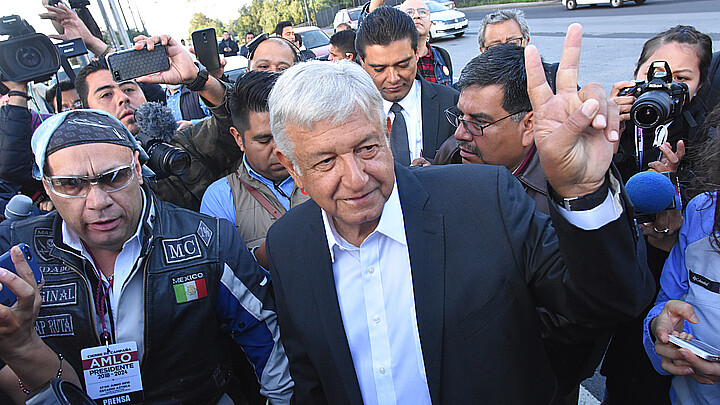Politics
Colombian President Gustavo Petro praises Claudia Sheinbaum for past M-19 activity
M-19 was an urban guerrilla group that operated in Colombia from the mid-1970s until the signing of a peace agreement in 1990. The group was mainly responsible for the siege of the Palace of Justice, which resulted in over 100 dead and missing, including 11 Supreme Court justices.
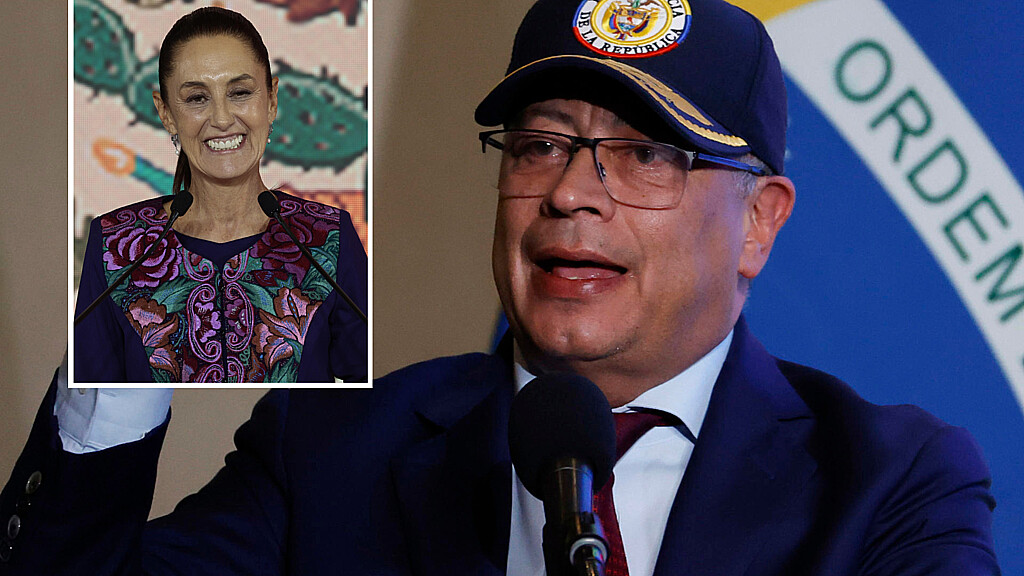
June 4, 2024 12:46pm
Updated: June 5, 2024 8:30am
Colombian President Gustavo Petro said on Monday that Mexican President-elect Claudia Sheinbaum previously collaborated with M-19, a paramilitary guerrilla group of which he was a member during his youth.
The Colombian president's shocking revelation was part of an unexpected post on the X social media platform, which he published at 2:55 p.m. EST on Monday along with a photo of himself beside the new, Mexican president-elect.
The post has since received 1.5 million views.
“Claudia helped the M-19 in Mexico during the times of clandestinity. From a very young age, she has been a great social activist. A woman of the left leading one of the largest nations in the world,” the Colombian leader wrote on X.
Claudia ayudó en los tiempos de la clandestinidad al M-19 en México. Desde muy joven ha sido una gran luchadora social. Una mujer de la izquierda dirigiendo una de las naciones más grandes del mundo.
— Gustavo Petro (@petrogustavo) June 3, 2024
Que su liderazgo nos ayude a llevar a América Latina hacia una economía… pic.twitter.com/zlsRGetIJZ
Petro's revelation about the new Mexican president-elect did not go unnoticed. Catalina Escobar, founder of the Juan Felipe Gómez Escobar Foundation and recognized by CNN Heroes for her work in supporting children and mothers without resources, used her X profile to question Sheinbaum’s rise to power.
Escobar said that while it was s significant achievement for a woman to break through Mexico’s male chauvinist culture by being elected president, Sheinbaum’s past with M-19 is “quite questionable.”
"Let us not forget the blood spilled from so many girls and young women who were conscripted into the ranks, a practice that has always existed, where their dolls and books were taken away so they could be sexually abused again and again and forced to abort,” she said.
“If they refused, they were shot. I do not celebrate those who harm humanity, even if they are president,” she said in an apparent reference to both Petro and Sheinbaum
M-19 was an urban guerrilla group that operated in Colombia from the mid-1970s until the signing of a cease fire peace agreement with the government, which led to its disarmament in 1990.
Soon thereafter, the militarized organization transformed into a political party with members that ran for public office, including now leftist Colombian President Gustavo Petro.
“Let us not forget the blood spilled from so many girls and young women who were conscripted into the ranks, a practice that has always existed, where their dolls and books were taken away so they could be sexually abused again and again and forced to abort. If they refused, they were shot. I do not celebrate those who harm humanity, even if they are president.” — Cata Escobar
Queda una mujer como presidente de México y parte la historia en dos de un país típicamente machista. Ella de la izquierda, dicen que más radical que AMLO. No me siento que deba celebrar, sobretodo sabiendo que ella siendo joven apoyó a la guerrilla del M-19.
— Cata Escobar (@Cataescobarr) June 4, 2024
No olvidemos la…
Claudia Scheinbaum’s complicated political past
Claudia Sheinbaum made history by being elected as Mexico's first female president in 200 years. She won between 58.3% and 60.7% of the votes, according to the quick count of the National Electoral Institute (INE).
She is slated to succeed her mentor, Morena party leader Andrés Manuel López Obrador, on Oct. 1.
On Feb. 7, ADN reported that a recent investigation conducted between 2010 and 2011 by the U.S. Attorney’s Office (USAO) for the Southern District of New York (SDNY) and DEA determined that López Obrador received funds from the Sinaloa Cartel during his 2006 presidential campaign.
Several leftist leaders in Latin America have celebrated Sheinbaum's victory, including regional dictators who see in her a continuation and escalation of the leftist political movement initiated by López Obrador.
Her grandfather and uncle were members of the Communist Internationale.
Her grandfather, Juan Sheinbaum, was imprisoned for three years for belonging to the Communist Party of Lithuania from 1920 to 1923. In 1923, Juan Sheinbaum and his brother Solomon emigrated to Cuba where they joined the Cuban Communist Party (PCC) In 1925.
Three years later in 1928, Juan was deported from Cuba to Mexico where he joined the communist party there. On Dec. 9, 1930 he was arrested and pretended to be Mexican to avoid deportation.
Two years later he joined the PCM Central Committee, was subsequently accepted as a member of the PCM Committee of the Federal District, and ultimately placed in charge of anti-military work on the PCM Central Committee.
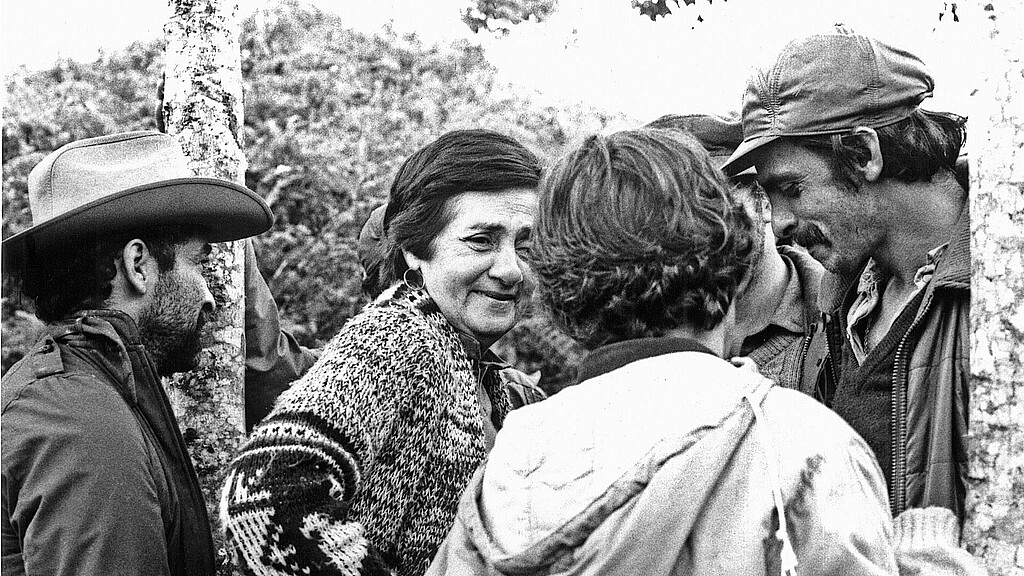
How M-19 rose to power in Colombia
The M-19 April 19 movement, which emerged in the late 1970s, differentiated itself from other Colombian guerrilla groups due to its origins in an alleged electoral fraud that brought conservative Misael Pastrana to power.
During this period in Colombian history, several guerrilla groups emerged with Marxist and pro-Soviet ideological roots.
Many organizations, such as the Maoist based Popular Liberation Army (EPL), originated from peasant “self-defense” groups and strengthened during a period of violence.
The National Liberation Army (ELN) had many middle-class members aligned with Fidel Castro’s communist Cuba, the Revolutionary Armed Forces of Colombia (FARC) emerged as a nationally renowned powerhouse, and M-19 evolved into an urban guerrilla organization that carried out high-profile missions to attract students and other discontented youths.
Initially, M-19 committed mostly symbolic acts to express strong criticism of the conservative Pastrana government that took power after defeating Gen. Gustavo Rojas Pinilla.
Pinilla headed a de facto government between 1953 and 1957 after staging successful military coup, but was forced to step down from public pressure after only four years. In 1961, he founded an alliance of reactionaries known as the National Popular Alliance (ANAPO), which acted as an opposition voice to a more powerful, moderate coalition of united conservatives and liberals.
In 1970, Pinilla unsuccessfully ran for president, but lost to conservative lawyer Misael Pastrana Borrero who served for four years until 1974. During that time, some of Pinilla’s acolytes mobilized the ANAPO into more extreme cells, which ultimately emerged into a call for armed struggle under a new label called M-19.
The M-19 guerrilla group first shed blood in 1976 with the kidnapping and murder of José Raquel Mercado, a union leader accused of treason.
Soon, the late 1970s became a reign of terror as M-19 carried out several kidnappings and robberies, including the raid on the Cantón Norte military base in Bogotá, where they stole over 5,000 weapons.
By the time Colombia entered the 1980s, M-19 was engaged in widespread criminal activity with armed attacks, assassinations, and contract killings. In February 1980, M-19 stormed a Dominican Republic Embassy cocktail party with diplomats from several countries and took them hostage.
Finally, after two months of negotiations, the siege ended without bloodshed, and several of the M-19 militants took refuge in Cuba, which at that time became a sanctuary and training base for Latin American guerrillas.
But that was just the beginning. M-19 soon openly confronted Pablo Escobar's Medellín drug cartel, inspiring conflict throughout the Colombian nation, transforming the once peaceful nation into a landscape of violence.
In 1985, the terror group made history by storming the Palace of Justice in November 1985.
The event resulted in a bloody battle with the army, leaving more than 100 dead and missing, including 11 Supreme Court justices, and the palace was ultimately set ablaze.
Later, a Truth Commission established to probe the events of the internal armed conflict in Colombia investigated the massacre, and found both M-19 and the National Army of Colombia responsible, suggesting the military overreacted.
To this day, conspiracy theories persist about the event, with some suggesting the siege was arranged with the Medellín cartel to destroy incriminating documents that implicated the military was in collusion with M-19.
According to data collected by the Historical Memory Center, the M-19 is allegedly responsible for:
- 4 cases of anti-personnel mines with 2 victims in 1984.
- 5 attacks with explosive devices on civilian or military installations between 1976 and 1982.
- 67 cases of selective assassination with 84 victims between 1974 and 1991.
- 4 cases of forced disappearance with 5 victims between 1979 and 1986.
- 1 case of sexual violence on May 11, 1976."


